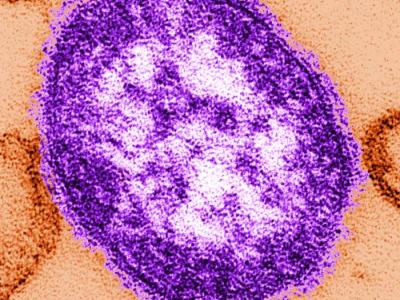WHO recommends new rapid molecular tests for TB
The World Health Organization (WHO) today issued an update to its consolidated guidelines on the detection of tuberculosis (TB) and drug-resistant TB.
The update includes three new classes of rapid molecular tests recommended by the WHO: moderate-complexity automated NAATs (nucleic acid amplification tests) for the initial detection of TB and resistance to rifampicin and isoniazid, low-complexity automated NAATs for detection of resistance to isoniazid and second-line anti-TB agents, and high-complexity hybridization-based NAATs for the detection of pyrazinamide resistance. An accompanying operational handbook aims to help facilitate implementation and roll-out of the tests by national TB programs.
The WHO estimates that more than a third of TB patients and two-thirds of those with drug-resistant TB go undetected. The agency hopes that the high diagnostic accuracy of rapid molecular tests, along with quick turnaround times, will lead to major improvements in the early detection of TB and drug-resistant TB.
"Ensuring that everyone can obtain a rapid and accurate diagnosis, followed by treatment according to the latest WHO guidelines, will save lives and reduce suffering," Tereza Kasaeva, director of the WHO Global TB Programme, said in a press release. "We call for rapid action and stakeholder support in ensuring these updates are rapidly implemented to enable access to the latest technologies and innovations."
Jul 7 WHO press release
Antibiotic stewardship interventions affect hospital in Oman
A series of antimicrobial stewardship (AMS) interventions by clinical pharmacists at a hospital in Oman had a significant clinical impact and helped reduce costs, researchers reported yesterday in the International Journal of Infectious Diseases.
The retrospective analysis of clinical pharmacists' (CPs') interventions at the 500-bed tertiary care hospital found that of the 828 interventions related to antimicrobial use in 2018, 62% involved intensive care unit patients, followed by patients admitted under medicine specialties (16%) and hematology/oncology patients (7%). The most common type of intervention was adjustment of the dosing regimen (42%), followed by deletion of the antimicrobial order (34%). The three antibiotics that most commonly required modification were meropenem, piperacillin/tazobactam, and vancomycin.
The most common type of clinical impact associated with the intervention was improving the efficacy of the treatment, which was reported in 45% of cases. Preventing unnecessary antimicrobial exposures was reported with 30%. Most of the interventions (64%) were graded as major. The projected net annual cost savings from the interventions, including cost reduction and cost avoidance, was US $193,320.
"We believe that our study not only demonstrates the important value of CPs in ID [infectious diseases] treatment, but also provides powerful evidence for policy/decision makers to consider the establishment of a formal AMS program at our institution," the study authors wrote.
Jul 6 Int J Infect Dis study
Valneva receives FDA breakthrough designation for chikungunya vaccine
Valneva, a pharmaceutical company based in France, today announced that its candidate single-dose vaccine against chikungunya virus—called VLA1553—has received breakthrough therapy designation by the US Food and Drug Administration (FDA), a step that will expedite the review process.
In a statement, Juan Carlos Jaramillo, MD, the company's chief medical officer, said, "Chikungunya is a major, growing public health threat and VLA1553 targets long lasting protection against the chikungunya virus with a single shot. We will continue to work closely with the FDA to bring a preventative solution to the market as soon as possible."
The company said it has completed enrollment for its phase 3 trial, designed to test immunogenicity and safety at 28 days following immunization, with topline data expected this summer. The live attenuated vaccine is the only chikungunya product in phase 3 trials.
To make the vaccine more accessible to low- and middle-income countries, Valneva signed an agreement with Brazil's Butantan Institute to develop, make, and market the vaccine. Support for development came from the Coalition for Epidemic Preparedness Innovations (CEPI) and the European Union Horizon 2020 program. The vaccine had previously received fast-track designation from the FDA and PRIME designation from the European Medicines Agency.
Jul 7 Valneva press release
WHO: Few global flu detections, mainly influenza B
Global flu activity in the middle 2 weeks of June remained below expected levels in both hemispheres, with little activity except for a slight increase in influenza B, especially in China, the WHO said in its latest global update.
Sporadic detections were reported in western and eastern Africa, as well as in India.
Of respiratory samples that tested positive for flu at national labs in the middle of June, 89% were influenza B, all the Victoria lineage. Of the subtyped influenza A viruses, 85.7% were 2009 H1N1 and 14.3% were H3N2.
The WHO included the caveats that social measures and changes in surveillance related to the COVID-19 pandemic could make it difficult to interpret flu patterns.
Jul 5 WHO global flu update













